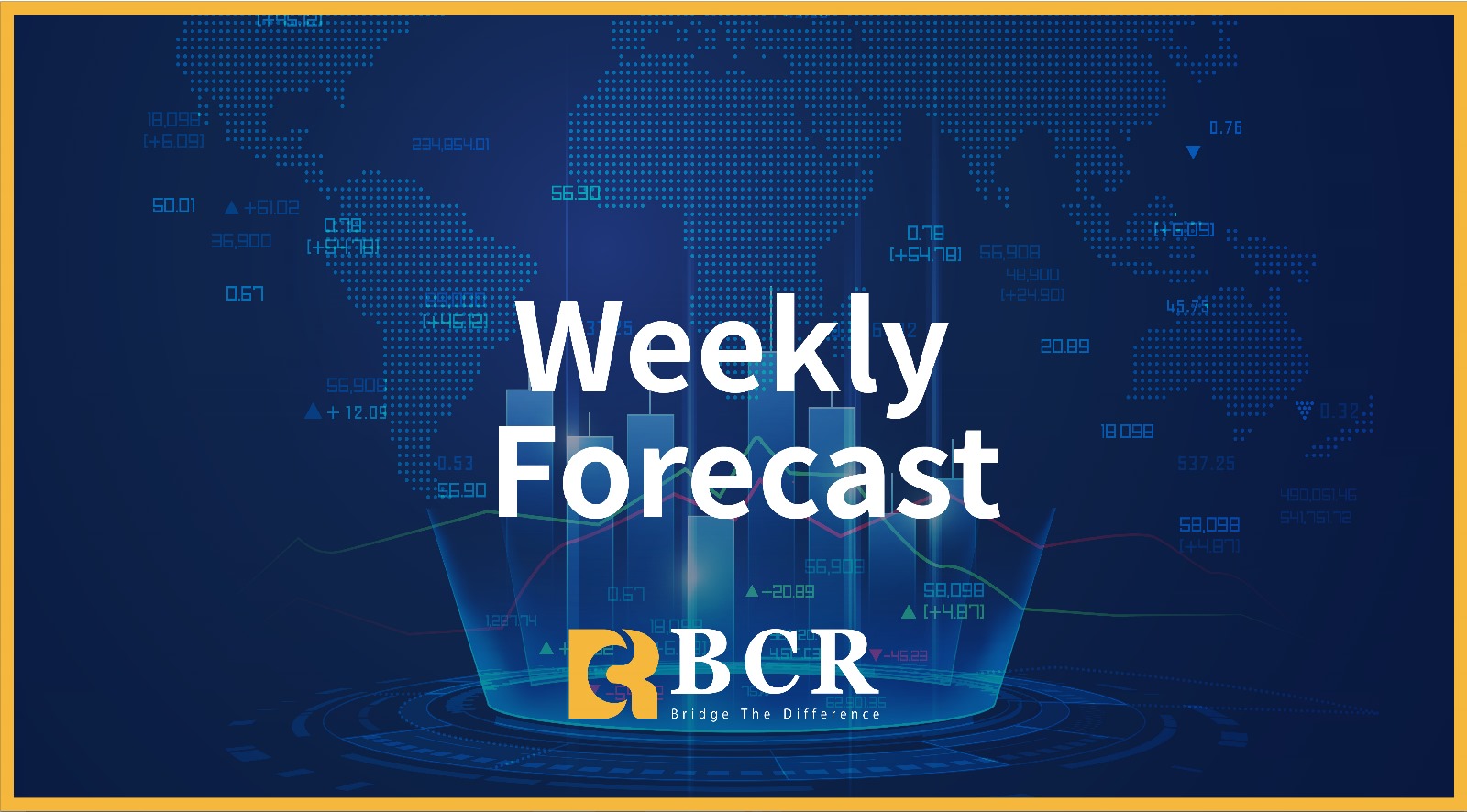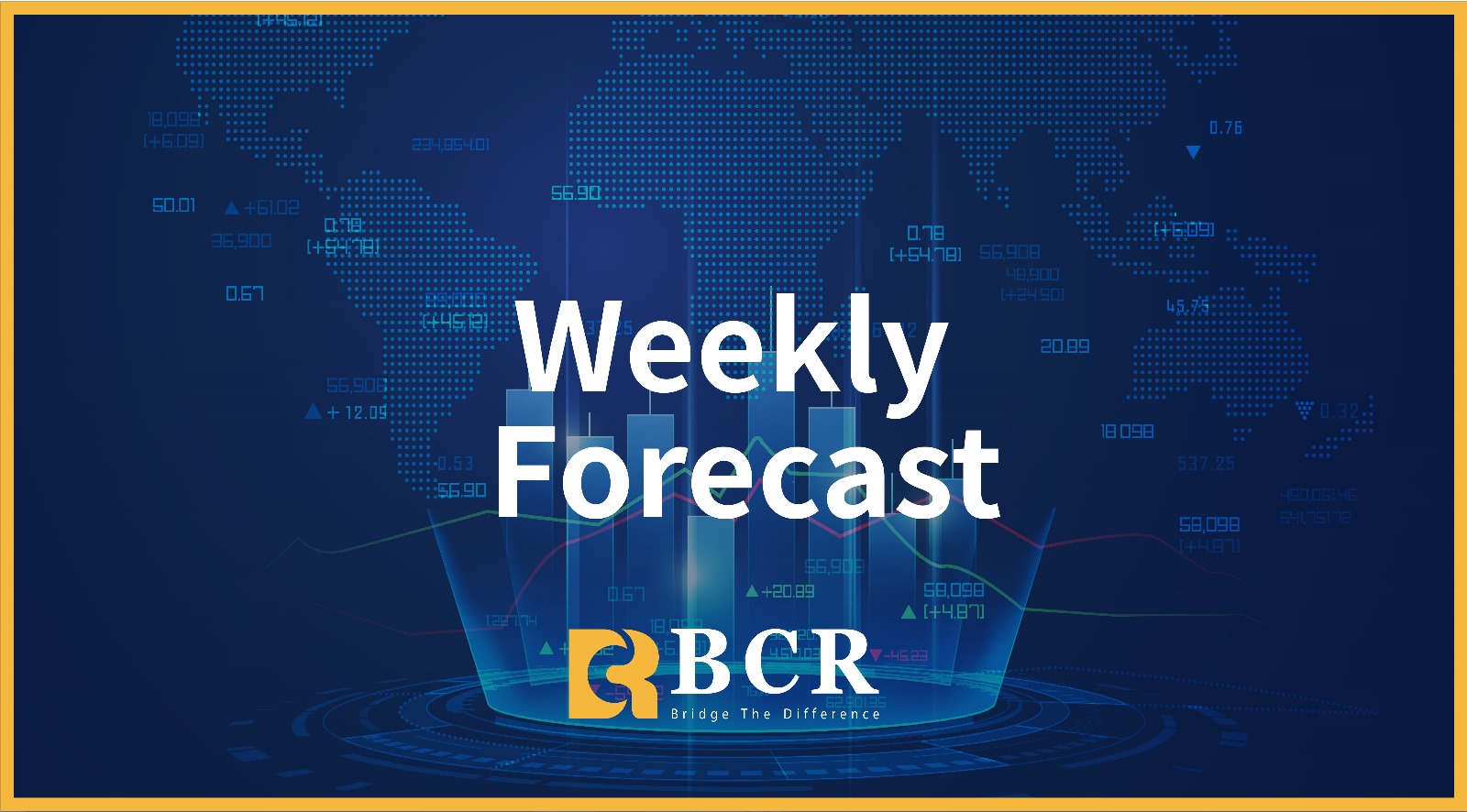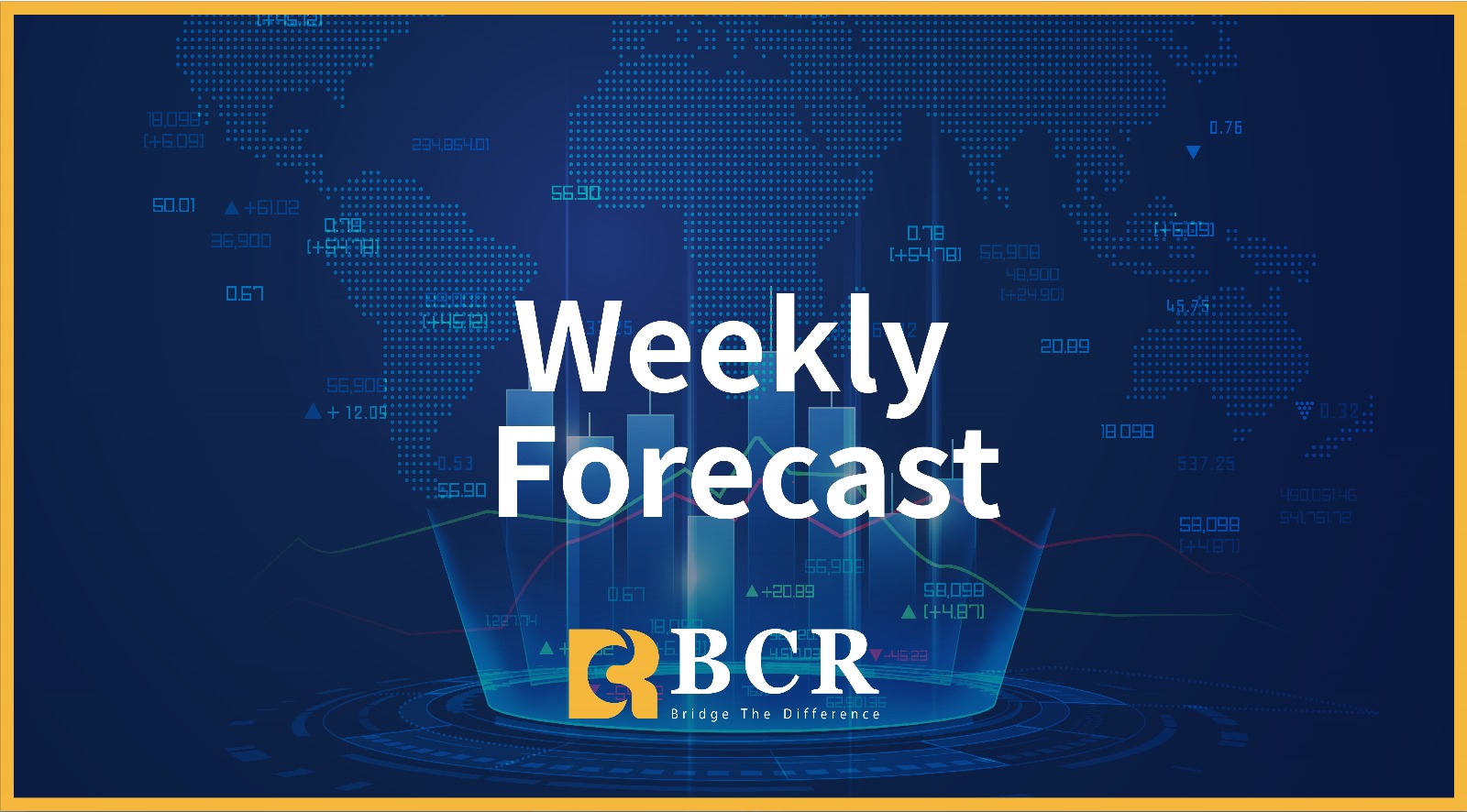





0
Last week, financial markets exhibited a pattern of "initial rise followed by a decline, with volatile and divergent movements," primarily influenced by two factors: adjustments in Federal Reserve policy expectations and the end of the US government shutdown.
With the US government shutdown just ended and the economic data "window" yet to be filled, coupled with the approaching Fed decision and fluctuating market expectations, US stocks, the US dollar, gold, and Bitcoin experienced significant volatility almost simultaneously this week, leading to a rapid cooling of global risk appetite. Global stock markets showed a divergent trend. After experiencing its worst single-day plunge in over a month overnight, US stocks showed a clear divergence before the end of last week: the Dow Jones Industrial Average fell by more than 200 points, while the Nasdaq rebounded by 0.7%, with the technology sector attempting to stem the bleeding. Meanwhile, the US dollar rebounded, supported by safe-haven demand and interest rate expectations, gold plummeted by more than 3%, and Bitcoin suffered its fourth consecutive day of heavy losses, falling below the $95,000 mark.
Market bets on a December rate cut plummeted this week from nearly 95% two weeks ago to about 51%, with liquidity sentiment and asset valuations facing reassessment. At the same time, the bond market remained uncertain, while volatility in the foreign exchange and commodity markets intensified. The market will enter a policy observation period, focusing on speeches by Federal Reserve officials in late November and the December interest rate meeting, while awaiting a flurry of delayed economic data releases next week, which could disrupt recent calm and trigger significant volatility.
Last Week's Market Performance Recap:
Last week, the Nasdaq Composite Index rebounded, driven by buying in technology stocks, reversing the previous day's sharp sell-off and ending a three-day losing streak. At the close, the Nasdaq rose 0.13% to 22,900.59; the S&P 500 dipped 0.06% to 6,734.11; and the Dow Jones Industrial Average fell 309.74 points, or 0.66%, to 47,147.48. All three major indices experienced significant intraday declines: the Nasdaq fell as much as 1.9%, the S&P 500 fell about 1.4%, and the Dow Jones once plunged nearly 600 points.
Gold experienced a large-scale sell-off on Friday. Gold prices fell despite heightened risk aversion, not due to economic pessimism, but rather to concentrated liquidity pressures. Hopes for a December rate cut plummeted, putting pressure on gold prices and causing a plunge of over 3% at one point during the session. Spot gold fell to a low of $4,032.10 per ounce, a drop of nearly $180 from its intraday high of $4,211.30 per ounce. Although gold still rose approximately 3.7% this week, Friday's sharp decline significantly weakened its overall technical structure.
Last week, silver prices climbed to $54.39 per ounce, nearing the record high reached last month, with gains exceeding 12%, as investors sought to hedge against global uncertainty with precious metals. The reopening of the US government eased market concerns and triggered a backlog of economic reports, causing silver prices to sharply retreat to levels below $50,000 before the weekend. The US Department of the Interior added silver, copper, and metallurgical coal to its list of "critical minerals" last week, highlighting their importance to the economy and national security.
The US dollar performed steadily in the weekend market, mainly driven by changes in interest rate expectations and increased risk aversion. Increased risk aversion coupled with declining expectations of a rate cut strengthened the dollar, which traded around 99.28 in late US trading. As the probability of a Fed rate cut in December continues to decline, the market is readjusting its assessment of the future interest rate path, thus supporting the dollar. The latest CME FedWatch shows that the probability of a rate cut has fallen from almost certain several weeks ago to slightly above 50%, giving the dollar a renewed interest rate advantage among major currencies.
The euro/dollar exchange rate remained within a trading range, currently trading around 1.1650 in North American trading, slightly higher, approaching the three-week high of 1.1655 reached the previous day. Although Eurozone GDP data showed continued weak economic growth, the euro performed strongly against the backdrop of a continued weakening dollar, with market sentiment leaning towards euro bulls. The yen continued to hover around a nine-month low of 145.50, with Japanese officials' "low-interest-rate inclination" suppressing expectations of a rate hike, putting pressure on the yen. Meanwhile, warnings from Japan's finance ministry about exchange rate volatility sparked speculation of intervention, making short sellers more cautious. The US dollar index weakened due to the US government shutdown, limiting upside potential for the USD/JPY pair.
Last week, the British pound was the weakest major currency, falling sharply against both the US dollar and the euro. This followed reports that Prime Minister Starmer and Chancellor Reeves had abandoned plans to raise income tax rates, a major policy shift before the budget announcement severely impacted market confidence. The pound closed the week at 1.3165, unchanged from the previous week. The Australian dollar traded around 0.6535 against the US dollar before the weekend close, up 0.60% for the week, supported by strong Australian and Chinese economic data that boosted demand for the Australian dollar, while uncertainty remained regarding the US dollar.
Oil prices surged over 2% at the weekend as supply concerns arose after the port of Novorossiysk, Russia, suspended oil exports following a Ukrainian drone strike that hit the energy hub's oil storage facilities. Brent crude futures rose $1.38 (+2.19%) to $64.39 a barrel; U.S. WTI crude spot prices rose $1.21 (+2.08%) to $59.77 a barrel. Brent rose 1.2% for the week, while WTI rose about 0.6%.
Bitcoin's performance last week was extremely weak, falling for four consecutive days. On Friday morning, it briefly fell below $95,000, hitting a new low since May. Although it rebounded slightly in the afternoon to trade around $96,800, it was unable to reverse the nearly 9% drop for the week. Bitcoin's downward trend is highly correlated with technology stocks. The current market liquidity is shrinking, and investors are forced to reduce their holdings of Bitcoin and other cryptocurrencies to manage risk and replenish funds in other assets.
The U.S. Treasury yield curve shifted downwards overall, with the 2-year yield falling to about 3.57%, and the 10-year yield slightly declining within the 3.98%-4.10% range. The easing of the US government shutdown crisis was a major driving factor. Recent statements from the White House indicating the end of fiscal uncertainty boosted market confidence, leading to a return of funds to US Treasuries and lower yields. Global safe-haven demand also supported US Treasuries. Geopolitical tensions and concerns about an economic slowdown drove capital inflows. The city of Chicago announced a halt to approximately $10 billion in US Treasury investments, but this was a small scale and did not have a systemic impact.
Market Outlook for This Week: This week (November 17-21), global markets will be bombarded with a dense release of data and major events. From GDP and inflation data from multiple countries to the Federal Reserve policy minutes, from Nvidia's earnings report to geopolitical meetings, various core variables will intertwine and collide, encompassing both macroeconomic fundamentals signals and hinting at policy shifts and industry trends. Each event could trigger significant market volatility. Investors need to closely monitor marginal changes in data and events and proactively plan for potential opportunities and risks.
Another key event is the release of the Federal Reserve's monetary policy meeting minutes. Following the Fed's decision to cut interest rates by 25 basis points on November 8th despite a lack of significant data, the market is closely watching the rationale behind this action. New York Fed President Williams will subsequently deliver a speech, which is expected to provide crucial guidance for the Fed's December interest rate decision.
Regarding this week's risks:
Risk Warning: Four Potential Risks to Watch Out For
The latest statement from the White House indicates that due to the impact of the shutdown, October's employment and inflation data may be permanently unavailable, meaning November's data will not be released until December.
In addition to core economic data and events, investors should pay close attention to four potential risks:
First, geopolitical conflicts and uncertainties. The diplomatic process between Saudi Arabia and Israel, and changes in the international and regional situation, may trigger increased risk aversion.
Second, unexpected policy shifts by central banks: Speeches or data from officials of the Federal Reserve, the Bank of England, and the Bank of Japan exceeding expectations could quickly correct market policy expectations, triggering sharp short-term fluctuations in the currency and bond markets.
Third, valuation volatility in the technology sector: If Nvidia's earnings report falls short of expectations, it could disrupt the AI bull market narrative, suppressing global risk asset sentiment, or it could become the starting point for a rebound after the negative news has been fully priced in.
Fourth, significantly deviating from expectations in inflation data: If inflation in countries like Europe, the UK, and Japan rises more than expected, it could force central banks to adjust their policy paths, disrupting existing market pricing logic.
How will the market trade US Treasuries, the dollar, and gold after the US government reopens?
The US government shutdown is nearing its end, reshaping the fundamental landscape of US Treasuries, the dollar, and gold. The progress of the short-term funding bill marks the imminent end of the 41-day deadlock, reflecting not only political compromise but also market weariness of uncertainty.
Historical experience shows that after similar events, the resumption of fiscal spending often expands the deficit, driving up bond supply and thus raising US Treasury yields. Currently, the Treasury has suspended some debt issuance to address liquidity pressures. Upon reopening, it is expected to quickly replenish funds, directly impacting the dollar's trajectory: rising yields may enhance the dollar's attractiveness, especially given the ongoing expectation of a Fed rate cut in December.
Feedback suggests traders largely agree on this process. While reopening is beneficial for risk assets, the dollar's mixed fortunes lie in subsequent data verification—if October CPI and retail sales show that the shutdown dragged down consumption, the rise in US Treasury yields may be unsustainable, and US Treasury prices may rebound. Reduced federal employee spending during the shutdown has already hinted at a negative economic impact, and the delayed release of the non-farm payroll report may reveal hidden unemployment concerns, further weakening dollar support. The updated fiscal deficit report will be a key focus; if the deficit exceeds expectations, selling pressure on US Treasuries will intensify, and the dollar index may bottom out around the 98 level, but a reversal in high-beta currencies should be watched closely.
Gold's fundamentals are more focused on the safe-haven chain transmitted through the bond market. The uncertainty surrounding the government shutdown has pushed gold to a three-week high. While the reopening has eased immediate panic, it hasn't eliminated deeper fiscal concerns. Gold's gains have offset a slight recovery in the dollar, partly due to the continued uncertainty surrounding the Russia-Ukraine situation combined with the shutdown effect. This has strengthened gold's safe-haven role: if US Treasury yields fluctuate due to deficit concerns, funds may flow into gold, amplifying its inverse correlation with bonds. A report released last week emphasized that if the ISM Manufacturing PMI is weak after the reopening, gold will benefit from a deepening recession pricing, rather than a simple "sell the fact" correction.
The interplay of these fundamental factors highlights the tension between policy and the economy. The interpretation of the FOMC meeting minutes will be key this week: if it hints at additional liquidity to address the aftermath of the shutdown, the dollar may break free from its "anchor" to US Treasury yields and come under pressure; conversely, higher-than-expected inflation data will reverse this logic, pushing the dollar stronger and suppressing gold. Prioritize monitoring Treasury announcements; while "positive signals" of the shutdown ending may boost risk appetite, the "negative echoes" of delayed data may dominate the medium-term narrative.
Market Outlook
Looking ahead to the remainder of the week, the reopening of the US government will inject new direction into US Treasuries, the US dollar, and gold. US Treasury yields may consolidate around the mid-range of 4.109%. If the resumption of fiscal spending confirms deficit expansion, yields are expected to gradually rise to the 4.146% range, supporting the US dollar index's recovery from its low of 99.00 and testing the 100.00 level, a key level for bond-currency correlation. However, the negative potential of delayed data should not be underestimated. If CPI and NFP data reveal the impact of the shutdown, a decline in yields will drag the dollar down to 98.00, releasing room for a rebound in non-US currencies.
Gold's safe-haven appeal in the bond market will continue its resilience at the $4,100 level. Even if the "sell the fact" effect emerges, gold's bullish crossover framework will buffer the pullback, maintaining its position above $4,000. Consensus indicates that this outlook balances risk appetite recovery with economic concerns. Volatility may flatten quickly after its peak, but the bond market, as a core hub, will dominate the safe-haven narrative for gold. Overall, the market will gradually transition to a stable state driven by fundamentals as uncertainty subsides. Traders need to closely monitor the strength of data releases to grasp the trajectory of this transition.
Is the Dollar Under Silent Threat? US Congressional Vote to Decide the Fate!
The US dollar has been under significant pressure recently, primarily due to the weakness in the US labor market and rising expectations of further easing by the Federal Reserve.
Data from ADP shows that in the four weeks ending October 25, the private sector averaged a net weekly layoff of 11,250 people, reigniting market concerns about a deteriorating job market. Last week's Challenger job cuts report revealed that US companies laid off 153,000 people in October, the highest level for the same period in twenty years. These two sets of data reinforce the consensus of a weakening labor market.
Federal Reserve policymakers have previously stated that the deteriorating job market is the core driver of this round of interest rate cuts. If the outlook weakens further, expectations for a December rate cut will continue to rise.
The ongoing US government shutdown has led to a halt in the release of key economic data, creating a data vacuum in the market. Investors are forced to turn to statements from Federal Reserve officials for guidance, causing the US dollar index to continue its pullback from last week's highs, providing temporary support for the euro against the dollar.
The short-term market focus is on the US Congressional developments. The House of Representatives will vote on a government spending bill. If passed, the bill will provide funding to the government until the end of January, potentially ending the current shutdown and allowing backlogged economic data to resume quickly, providing greater clarity on the true state of the US labor market.
The US dollar index may react in advance. If it continues to rise significantly, a successful vote could lead to profit-taking by long positions. Conversely, a failed vote could result in a downward overshooting risk for the dollar index.
Geopolitically, the ongoing stalemate in the Russia-Ukraine conflict provides background support for gold, but has not become the dominant force. Overall, these fundamental factors are intertwined, and in the short term, the market will revolve around the congressional vote and statements from Federal Reserve officials: a smooth passage of the vote could restore risk appetite and temporarily suppress gold; conversely, any delays will amplify safe-haven demand, pushing gold prices to test higher levels.
The gold market is expected to maintain a constructive tone. Mixed signals from private sector employment and a marginal easing of the trade environment have jointly solidified structural support for gold prices. While geopolitical noise persists, it will not dominate short-term direction. On a broader level, the market will smoothly transition from the immediate impact of political events to a more gradual interpretation of economic data.
From a macro perspective, this shutdown exposed the fragility of the US fiscal mechanism and the structural risks of partisan politics. In the short term, market sentiment may improve due to the resumption of funding, but medium-term signals indicate that the dollar and US Treasury yields may fluctuate due to concerns about fiscal sustainability.
US Government Shutdown Ends: Unable to Stop Gold Prices from Rising Towards $4,200 by Year-End
Amidst the current global economic turmoil, gold prices may have firmly established themselves above the psychologically important $4,000 per ounce mark. Even with the US Senate's recent passage of a bill ending the longest government shutdown in history and the slight easing of geopolitical tensions, buying enthusiasm for gold remains undiminished. Wall Street and top European investment banks are unanimously proclaiming: this gold bull market is far from over!
The US government has reopened? So what? The real engine of the rally has only just begun!
The US Congress has finally relented, the Senate swiftly passed a new funding bill, and the House vote is imminent, making the reopening of the US government seem imminent. However, I believe: don't be too hasty! Short-term funding will only last until the end of January. If Congress fails to grant a "continuation resolution," the shadow of partial shutdown could return after January 30th. Not to mention the Supreme Court's intensive review of the IEEPA case regarding the legality of tariffs; any slight development could reignite safe-haven demand. Gold's "safety cushion" properties are shining ever brighter in this jungle of uncertainty.
Over the past two months, the US government shutdown has resulted in virtually zero data output, while the private sector has been sounding alarm bells. The ADP report shows only 42,000 new jobs added in October, a record low in recent years; Challenger's layoff data is even more staggering—150,000 jobs were wiped out in a single month, the worst performance in 20 years! Meanwhile, consumer confidence has plummeted to a 3.5-year low. Once official data "thaws," the truth about the US economic slowdown will be laid bare, forcing the Federal Reserve to unleash even more aggressive interest rate cuts!
My personal prediction: The Federal Reserve will significantly cut interest rates beyond expectations before 2026, and the negative real interest rate environment will be a super catalyst for gold prices. With the global debt snowball growing ever larger, fiscal cliffs, inflationary concerns, and currency devaluation fears... gold, as the ultimate "safety asset," will only see increasing demand! I am bullish until the end of this year—gold is expected to reach $4,800-$5,000 per ounce by 2026! Looking globally, developed countries' debt-to-GDP ratios have soared to historical highs, and investors' fears of fiscal collapse are growing daily. Gold is no longer an "old relic," but a hard currency to hedge against inflation and monetary collapse. Demand for gold bars is climbing at a visible rate because it is the last bastion against systemic risk.
Whether it's central banks' massive gold purchases or individual investors' frenzied hoarding, gold's "return to glory" is irreversible.
Conclusion: $4,000 is just a warm-up; $4,200 is the new main battleground. The US government reopening? It may just be a minor episode in the gold bull market. Economic data vacuum, layoffs, interest rate cut expectations, debt crisis, tariff disputes… every domino is adding fuel to the fire for gold prices.
The market awaits Wall Street giants' collective bet: $5,000 in 2026 is not a dream, but a high-probability event!
Under US sanctions; oil companies urgently cut ties with Russian oil! Oil Prices Rebound; Short-Term Direction Awaits
Last week, international oil prices rebounded for the second consecutive week. US sanctions have begun to have a substantial impact on Russian crude oil exports, with some Asian buyers showing a more cautious purchasing attitude. Despite this, Russia has repeatedly demonstrated its ability to maintain exports under sanctions over the past three years. The market is generally focused on the sustainability of the sanctions and their potential impact on the global crude oil supply landscape.
The market believes that the latest US sanctions on Russia's energy sector have gradually penetrated the export chain, causing some buyers to reassess import risks. Market surveys show that five major Indian refineries have not yet placed orders for Russian crude oil in December, indicating signs of restricted export flows.
Meanwhile, Russian energy company Lukoil declared force majeure at its West Qurna 2 oil field in Iraq, further reflecting the impact of sanctions on its overseas operations.
The market generally expects that if sanctions tighten further or insurance and transportation restrictions intensify, global supply will be more disrupted, thus providing continued support for oil prices. The dynamic balance between geopolitical risks and price support: The current oil price rebound is mainly driven by two factors: firstly, expectations of supply contraction due to sanctions; and secondly, defensive pricing by the market in response to the disruption of Russian oil exports. However, if Russia finds new sales channels or Asian demand recovers, the upward momentum of oil prices may weaken.
The short-term oil price increase reflects a risk premium, rather than a structural change in supply and demand. If the market confirms that Russia can maintain its export volume, oil prices may correct again.
From a trend perspective, the sustainability of the oil price increase still depends on the intensity of sanctions and the speed of the buyer's market response. While the current cautious attitude of Asian countries puts pressure on the supply side, global crude oil inventory levels and the production adjustment capabilities of non-Russian oil-producing countries remain balancing factors.
If Russian exports remain restricted in the coming weeks, oil prices are expected to continue their rebound. This week, close attention should be paid to changes in inventory data.
This week's conclusion:
This week's market exhibited characteristics of "high-level fluctuations and structural divergence," with the core variable being the shift in expectations for Federal Reserve policy. Investors should be wary of short-term volatility and pay attention to key data in late November to position for the year-end.
Meanwhile, the market will enter a policy observation period, focusing on speeches by Federal Reserve officials in late November and the December interest rate meeting. Global stock markets are likely to consolidate within a range, with structural opportunities still existing, but the risk of further corrections in overvalued sectors should be noted.
Overview of Important Overseas Economic Events and Matters This Week:
Monday (November 17): Japan's preliminary Q3 seasonally adjusted real GDP growth rate (%); US November New York Fed Manufacturing Index; ECB Chief Economist Lane speaks.
Tuesday (November 18): Australia's ANZ Consumer Confidence Index for the week ending November 16; RBA releases minutes of its November monetary policy meeting.
Wednesday (November 19): UK October CPI year-on-year rate (%); UK October Retail Price Index year-on-year rate (%); UK October unadjusted input PPI year-on-year rate (%); Eurozone October harmonized CPI year-on-year rate - final unadjusted value (%); US EIA gasoline inventory change for the week ending November 14 (in thousands of barrels).
Thursday (November 20): UK November CBI Industrial Orders Balance; US September Non-Farm Payrolls Change (seasonally adjusted, in thousands); US September Unemployment Rate (%). US September Average Hourly Earnings YoY (%); US November Philadelphia Fed Manufacturing Index; Eurozone November Consumer Confidence Index (Preliminary); US October Existing Home Sales (Annualized, in thousands); Federal Reserve Monetary Policy Meeting Minutes.
Friday (November 20): UK October Retail Sales MoM (Seasonally Adjusted) (%); Eurozone November SPGI Manufacturing PMI (Preliminary); UK November SPGI Services PMI (Preliminary); UK November SPGI Manufacturing PMI (Preliminary)
Disclaimer: The information contained herein (1) is proprietary to BCR and/or its content providers; (2) may not be copied or distributed; (3) is not warranted to be accurate, complete or timely; and, (4) does not constitute advice or a recommendation by BCR or its content providers in respect of the investment in financial instruments. Neither BCR or its content providers are responsible for any damages or losses arising from any use of this information. Past performance is no guarantee of future results.
Lebih Liputan





Pendedahan Risiko:Instrumen derivatif diniagakan di luar bursa dengan margin, yang bermakna ia membawa tahap risiko yang tinggi dan terdapat kemungkinan anda boleh kehilangan seluruh pelaburan anda. Produk-produk ini tidak sesuai untuk semua pelabur. Pastikan anda memahami sepenuhnya risiko dan pertimbangkan dengan teliti keadaan kewangan dan pengalaman dagangan anda sebelum berdagang. Cari nasihat kewangan bebas jika perlu sebelum membuka akaun dengan BCR.
BCR Co Pty Ltd (No. Syarikat 1975046) ialah syarikat yang diperbadankan di bawah undang-undang British Virgin Islands, dengan pejabat berdaftar di Trident Chambers, Wickham’s Cay 1, Road Town, Tortola, British Virgin Islands, dan dilesenkan serta dikawal selia oleh Suruhanjaya Perkhidmatan Kewangan British Virgin Islands di bawah Lesen No. SIBA/L/19/1122.
Open Bridge Limited (No. Syarikat 16701394) ialah syarikat yang diperbadankan di bawah Akta Syarikat 2006 dan berdaftar di England dan Wales, dengan alamat berdaftar di Kemp House, 160 City Road, London, City Road, London, England, EC1V 2NX. Entiti ini bertindak semata-mata sebagai pemproses pembayaran dan tidak menyediakan sebarang perkhidmatan perdagangan atau pelaburan.